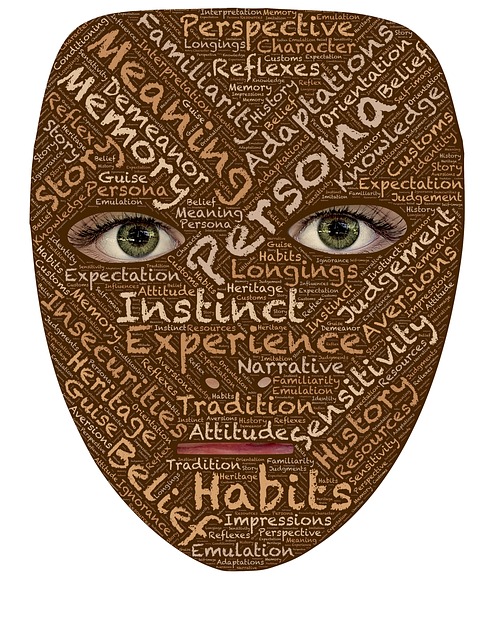Rick Hanson, in a podcast interview on the topic Confidence or Narcissism?, focused on the fact that many of us confuse confidence with narcissistic tendencies – in summary, being self-absorbed and pursuing the need to be valued in the eyes of others. He suggests that our behaviours often derive from adverse childhood experiences where we have been deprived of what he calls, “narcissistic supplies” – a deprivation of expressions of love and appreciation for who we are, not for what we might achieve or become. Later in life, we try to fill the gap left by this deprivation by seeking to draw attention to ourselves or pursuing self-interest at the expense of everyone else.
Rick suggests that one way to fill the gap is to be mindful throughout the day whenever we experience something that is self-affirming, e.g., an expression of gratitude, and to savour this in the moment. He also recommends loving kindness meditation towards others who are engaged in extreme narcissistic behaviour – recognising that their bullying, belittling, and blaming behaviours are often the result of a deficit (not receiving positive affirmation in their younger years). Mindfulness meditation can increase our awareness of our own narcissistic tendencies, build a genuine confidence born of appreciated positive affirmations and help us to understand what drives behaviour that is perceived as “over-confidence” or “superior conceit”.
The disabling effect of negative self-stories
Negative self-stories can undermine our confidence, lead to procrastination and act as a barrier to creativity in our life’s work.. These can have their origins in parental messages, schoolyard experiences, workplace exchanges or other environment influences. They are below awareness and are often reinforced by our own self-criticism throughout our life experiences. The self-stories get reflected in our emotional responses and habituated behaviour, such as procrastination.
Tara Brach, meditation teacher and practitioner, suggests that it is important to bring these stories “above the line” in order to prevent them from undermining our confidence and self-belief. She encourages us to practice meditation and reflection to enable us to name the stories, embrace the underlying feelings, understand recurring patterns, and increase our awareness about their origins and our self-reinforcement of the persistent false beliefs. Leo Babauta recommends adding a dose of self-kindness, as well as loving kindness towards others.
A reflective framework
In a recent online webinar on Awaken Your Confidence, Empowerment Coach Amy Schadt provided a reflective framework that identified four categories of self-doubt. After the workshop, she generously provided a worksheet for one of the four categories that you identified during the workshop as being the most prominent self-doubt category in your life at the moment. The worksheet provided a means of reflecting on the thoughts and behaviours that were creating a blockage for you and undermining your confidence.
Amy usually works with women and offers a range of services such as personal coaching, workshops, and her signature online program, Design Your Unstoppable You. However, I participated in the webinar because I wanted to address a blockage to undertaking what Leo Babauta, creator of Zen Habits, describes as “your meaningful work” – your life purpose which involves actualising your knowledge, skills and experience in the service of others. It often entails uncertainty and moving outside your comfort zone. The meaningful work that I found difficult to initiate is the conduct of a series of online mindfulness webinars. So, I could readily relate to the category of self-doubt identified by Amy as Hesitation.
Viewed on a purely logical level, this hesitation is not rational. I am trained in group facilitation and have run hundreds of paid, face-to-face workshops and, more recently, many via the Zoom platform. I am very comfortable with the technology, have a paid subscription to Zoom (so I can control the medium) and have a group of over 200 potentially interested people in my paid Meetup Group, Brisbane Courses and Workshops. I have conducted a number of paid workshops on mindfulness in organisations. I have also written more than 550 blog posts on the topic of mindfulness and engaged in a wide range of regular mindfulness practices, including Tai Chi.
It is as if my life’s study, training, and experience has been preparing me to undertake this meaningful work in the form of online, mindfulness workshops. I am very conscious that there is a huge need for mental health support in the community and I am firmly convinced through my research, writing, and practice that mindfulness has a role to play in providing that support. While my hesitancy about conducting these specific mindfulness workshops has no rational basis, it clearly has an emotional one.
Reflection
As Amy points out, underlying hesitancy is a fear that something could go wrong, I might make a wrong decision or the workshops will not work out as I expect them to. In combining Amy’s Self-Doubt Hesitation Worksheet approach and Leo’s approach to dealing with rationalizations that prevent us from undertaking our “meaningful work”, I decided initially to explore my rationalisations for hesitancy and identify “contrary arguments based on evidence of my past experience”.
My Rationalisations
After some sustained thought and reflection, I identified the following rationalisations as blockages to my undertaking the desired workshops:
- I am uncertain about the needs/interests of potential participants
- The workshops may not meet my expectations in being able to help people
- Workshop participants might have questions that I might not have the answer to
- Workshop participants may have mental health issues that I do not know how to handle
- I am concerned that I might accidently trigger a trauma response.
My counter arguments for these rationalisations
Leo suggests that you explore counter arguments for your rationalisations to weaken their hold and open up new, creative possibilities. Here’s my attempt to provide counter arguments for each of my rationalisations listed above:
- Uncertainty re needs – It is likely that members of my Meetup group (people who have expressed an interest in mindfulness and related topics) have needs and issues in areas that I have covered in my blog, including effective leadership and creating a mentally healthy workplace. The workshop would also enable them to be aware of, and have access to, the numerous resources mentioned in this blog. There are many other people who are members of Meetup groups across the world who have similar interests and would be interested in participating once the workshops were advertised throughout Meetup. This increases the likelihood of my not knowing what their pressing needs are or how to address them in the workshop. However, I could conduct a survey via Survey Monkey© to elicit these. I could also just ask participants what topics they want to cover in future workshops (which is something I do on a regular basis in my manager development programs).
- Not meeting expectations – I know from my many manager development workshops over many years that you cannot control outcomes in workshops, you can only design the process the best you can with the knowledge and information that you have at the time. People come to workshops with different expectations, orientations, readiness to learn and motivations. People have different learning styles and they also learn differently in various situations. For one person, something another participant says might be the catalyst to deep insight; for another, it might be something they read away from the workshop. I cannot control outcomes, nor should I try. Hugh Van Cuylenburg, author of The Resilience Project, and other creative writers, artists and performers, emphasise the need to focus on process not outcomes and explain how this perspective generates freedom and creativity.
- Questions I can’t answer – I am not intending to present myself as a mindfulness expert or mindfulness trainer. I want to share what I have learned about mindfulness – its processes, benefits, challenges and rewards. I will encourage participants to share their experiences, knowledge, practices and insights. I also have a mountain of resources at my disposal to share with anyone who has a question that I cannot answer or that someone in the participating group does not have the answer to.
- Mental health issues that are too complex – I will not be presenting myself as a mental health expert but as someone who has had to deal with mental health issues personally and as an ongoing carer. I will provide a disclaimer – “I am not a Medical Doctor or Psychologist/Psychiatrist; I am a retired Emeritus Professor of Management who has worked with many people within organisations on a very wide range of issues affecting human behaviour.” I know that for some people in some circumstances the very opportunity to share their challenges in a supportive environment can be a healing process. I have some understanding about when to refer people to a professional in the area of mental health and I am aware of many resources in this area (having provided organisational consultancy services to a number of organisations in the mental health field).
- Trigger a trauma response – I have become acutely aware that some mindfulness practices, as well as facilitation activity (e.g., storytelling), can be a trauma trigger for an individual. I became very aware of this through the work of David Treleaven on trauma-sensitive mindfulness. I have researched this area and written a number of blog posts on the topic. The staring point is to have the awareness about this possibility. There are strategies I can employ such as providing a choice of anchors when undertaking meditation practices that will reduce the risk. However, the reality is that I have no control over what will be a trigger for an individual – many people have had adverse childhood experiences and trauma in their life and the potential triggers are too numerous to mention or even adequately conceive. I think I also have a particular sensitivity in this area because I have seen on a number of occasions where a relatively harmless intervention activity has resulted in a major physical and emotional traumatic response – and it is something that made myself and other people present very uncomfortable.
These reflections on rationalisations and counter arguments have helped me to strengthen my resolve to undertake this meaningful work and clarified for me what I need to do to ensure I develop a quality process for my proposed workshops. As I grow in mindfulness through meditation, reflection and other mindfulness practices, I can gain greater self-awareness, insight and wisdom, increased clarity about what I am trying to achieve and heightened creativity to achieve outcomes people value.
_________________________________________
By Ron Passfield – Copyright (Creative Commons license, Attribution–Non Commercial–No Derivatives)
Disclosure: If you purchase a product through this site, I may earn a commission which will help to pay for the site, the associated Meetup group, and the resources to support the blog.









